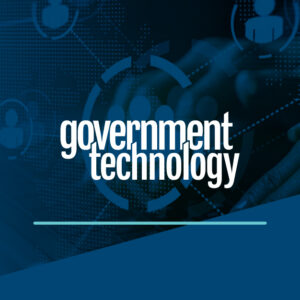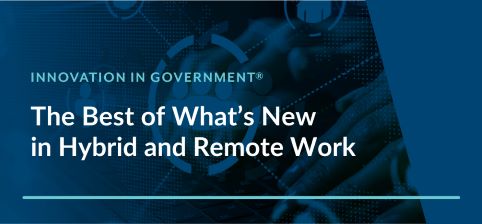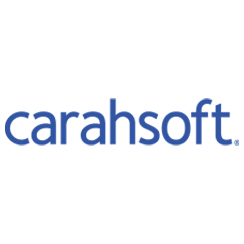When the COVID-19 pandemic struck in March 2020, agencies scrambled to expand secure connectivity and acquire mobile devices, but most state and local CIOs say their organizations transitioned relatively easily to working from home on an emergency basis. Now, with COVID-19 cases in the U.S. dropping dramatically and economies reopening, public agencies face a more complicated issue: figuring out where and how state and local government employees will work going forward. A 2020 CDG national survey found almost 75 percent of respondents anticipate hybrid work — where employees work from home at least on a part-time basis — will be their long-term model. The trend is particularly strong at the state level where just 16 percent of respondents anticipate returning to a fully in-person work environment. Read the latest insights from industry thought leaders in hybrid and remote work in Carahsoft’s Innovation in Government® report.
Modernizing Contact Centers to Enable Remote Work
“To ensure callers have a secure, fluid and reliable customer experience, agencies must maintain diverse channels of communication. Another challenge is ensuring that contact center agents have secure and timely access to their agency’s database, intuitively orchestrated communications and sufficient bandwidth for reliable connectivity. Organizations also need to minimize the learning curve associated with introducing new endpoints such as Bluetooth-enabled headsets, softphones and web real-time communication (WebRTC), which eliminate the need for traditional desk phones and enable workers to use their laptop for voice or digital interactions.”
Read more insights from Genesys’s Senior Solutions Consultant, Ivory Dugar.
The Digital HQ: Flexible, Inclusive and Connected
“What we’ve seen over the past year hasn’t just been about working from home. It’s been working from home during a pandemic. As the pandemic has stretched into its second year, employees are feeling the strain. The data show that even though the work-from-home experience is better than working in the office full time, employee satisfaction with work-life balance has declined and stress and anxiety have increased. A contributing factor to that stress is the pressure to demonstrate productivity. A third of remote workers say they feel pressure to make sure their managers know that they’re working.”
Read more insights from Slack’s Future Forum Senior Relationship Manager, Dave Macnee, and Customer Success Leader for Public Sector, Kevin Carter.
 Giving Remote Workers Access to Resources They Need
Giving Remote Workers Access to Resources They Need
“Centralized IT management and virtualization technology are critical to manage infrastructure and address changes quickly and at massive scale — whether that’s to patch a vulnerability across all user devices, upgrade applications or deploy additional computing resources. IT can make a change once via software and then distribute it to everyone’s device within minutes with minimal downtime. Software can monitor network traffic and resource utilization in aggregate and then automatically allocate resources as needed so organizations don’t have to invest in higher-performance user devices or purchase more hardware. In addition, organizations can isolate workloads and systems for security or other purposes, meaning multiple workloads and operating systems can run on the same device.”
Read more insights from NVIDIA’s Senior Manager of Public Sector, Chip Carr.
Managing Process and Cultural Change
“It’s projected that 30 to 35 percent of the public sector workforce will remain remote. A lot of these workers will probably be younger. To attract and engage the workforce of the future, you have to keep systems, processes and tools up to date. Younger people run their lives on their phone. If you expect them to submit to completely manual paper-driven processes, you’ll probably never get a chance to hire them, much less retain them. You also have to find out what they need to be successful in a remote environment; show them a path to promotion; and demonstrate that remote, hybrid and on-prem teams are aware of and understand their value to the organization.”
Read more insights from SAP Concur’s Senior Director of Public Sector, Jim McClurkin.
Navigating the New Frontier
“Having more flexibility and removing the location barrier opens up real opportunities, especially when it comes to competing for specialties like IT. Some states prohibit hiring out of state, but organizations can still widen the pool to include candidates beyond their local headquarters. They can recruit candidates who want to reside in areas with a lower cost of living or who don’t have the time to commute, for example. This flexibility also helps attract minorities and women, which in IT work, has been a real challenge.”
Read more insights from CDG Senior Fellow, Peter K. Anderson.
Download the full Innovation in Government® report for more insights from these hybrid and remote work thought leaders and additional industry research from GovTech.







